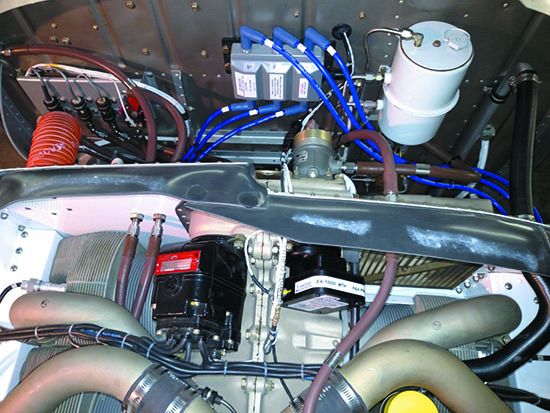Three weeks ago, I started checking out an owner in his new-to-him Bellanca Scout, a 180-HP, constant-speed prop tailwheel utility airplane of the sort I’ve flown on and off for 40 years. However, the first takeoff was a revelation—it performed far better than any 180-HP Scout I’d ever flown. Asking about it, the owner told me that it had one Electroair EIS installed.
Reading about and talking with owners about performance increases was one thing, experiencing it was another matter. I live in a mountainous area and better takeoff and climb performance is not just important, it can be lifesaving.
That got me thinking about the value versus cost of electronic ignition. What is increased performance, easier starting, better fuel economy and reduce maintenance cost (mag and spark plugs) worth?
Starting the discussion with pure numbers, right now it costs a bare minimum of $500, plus shop time and shipping, to send out a Slick mag for inspection/repair when it is pulled at 500 hours in service. For Bendix, figure a minimum of $700.
Dropping in a single SureFly SIM on a six-cylinder engine will cost $1895 for the kit ($300 less for a four-cylinder engine) and at least $400 for the install. So, for approximately $2300, you’ve got an ignition system that will run through engine overhaul (useful life of a SIM is 2400 hours) at least and you’ve saved a number of magneto R & R events. That alone seems we’ll worth the cost of admission if you’re planning on keeping and flying the airplane at least 1000 hours. Getting a 10 to 15 percent reduction in fuel burn at the same TAS is gravy.
A single Electroair EIS for a six-cylinder engine is $3995 (that’s one in the photo above—the coil pack is on the firewall and the mag timing housing is installed where one mag used to live). Adding three days for install at $100 per hour bumps the total to $6395. That gets rid of R & R for one mag for as long as you own the airplane as the EIS has no life limit and will keep on going through overhauls. The four-cylinder EIS kit is $1200 less, $2795—and installation is only two days.
Looking at maintenance costs—and ignoring longer spark plug life and risk of catastrophic failure of a mag—it takes a while for the reduced maintenance cost to add up. However, the EIS has no life limit.
Where the scales balance, in my opinion, is in performance, especially for the big-bore engines regularly flown above 8000 feet by pilots who make flights of several hours’ duration. I spoke with one owner who installed a single Electroair EIS because he routinely makes long flights in his Bonanza and the EIS fuel saving allowed him to make most of them nonstop where they had required a fuel stop previously—plus, he got to altitude more quickly, a further fuel saving. The longer you plan on keeping your airplane, the better an Electroair EIS looks.
We also think the Electroair EIS makes good sense in the Mountain West with high density altitudes and the need to go to altitude regularly.
With regard to replacing both mags with the Electroair EIS, the equation is less clear. If the airplane already has two alternators or some other source of standby electrical power for one EIS, the cost is the price of two kits plus installation. If a standby battery is required, add on the order of $2000 for the battery and installation. I don’t think that the price of two EIS units installed is twice that of one, but, for the sake of conservative planning, let’s say it is.
That’s a bunch of money where the additional performance and fuel efficiency gain is only about 10 to 15 percent. However, where we think it makes sense is for flight schools, Part 135 operators and anyone else who flies the bejabbers out of the airplane. Getting rid of magneto maintenance—and mag dispatch reliability issues—completely makes good sense. I’m aware of one flight school that puts several thousand hours on its fleet of Piper Archers annually that is in the process of installing a second EIS in each of its airplanes—all already have one—because magneto issues are its number one dispatch reliability problem.
Finally, if you’ve got a Bendix dual mag, the Electroair replacement for it means true redundancy and getting rid of numerous ADs. For about $10,000 ($8600 for a four-cylinder engine), with standby battery, installed, I think it’s worth it.
In my opinion, if you’re going to keep your airplane for any length of time, installing a SureFly SIM makes financial sense. If you fly high, on trips of three hours or more and/or operate in the Mountain West, hanging an Electroair EIS on your airplane will give you additional performance and reliability that means peace of mind that’s worth the investment. If you put a thousand hours on your airplane annually and are overhauling engines every couple of years, getting rid of magneto issues by installing the dual EIS makes sense.


